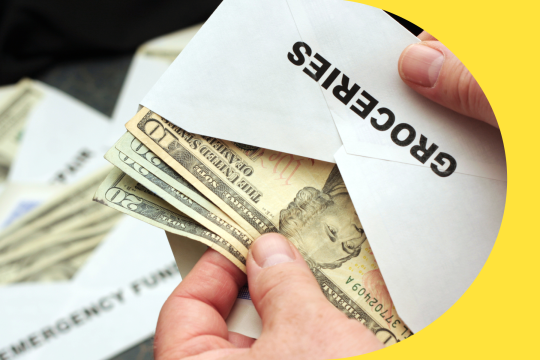Everyone’s financial journey is unique, but the principles of smart money management are universal.
Thanks to helpful online resources (like yours truly), more people are finding ways to monitor their spending while building financial momentum. Among these strategies, one method is rising in popularity: the zero-based budget.
What is a zero-based budget?
A zero-based budget is more than just a spreadsheet of numbers or an app that tracks your spending. It's a philosophy. The name itself says it all: Every month, you start at zero. But what makes a budget a zero-based budget?
Both traditional and zero-based budgets are based on income, but they have important differences. In traditional budgeting, you might take your monthly income, subtract your regular expenses, and put whatever is left into savings or rainy-day spending.
The zero-based method flips this. Instead of saving what's left after expenses, every single dollar of your income is assigned a job. Every allocation is intentional — from rent and groceries to entertainment and savings. The goal is to account for every dollar of your income so there isn’t a single cent left unassigned by month’s end.
A zero-based budget encourages intentionality in financial management — it’s all about being proactive about your financial planning. And that’s exactly why a zero-based budget is important for those looking to take control of their finances.
How does zero-based budgeting work?
Imagine your finances as a puzzle, where every piece — every dollar — fits perfectly to complete the picture of your monthly budget. Zero-based budgeting is about making sure you use all the pieces.
Here’s how to get going with a zero-based budget:
1. Start fresh. Each month is a clean slate. Regardless of whether you were under or over in each category the previous month, you start anew. This fresh start emphasizes mindfulness and adaptability.
2. Assess your income. Begin by listing all your income sources. This isn’t limited to your paycheck. Freelance work, side gigs, bonuses, even gifts — every dollar counts.
3. List your expenses. Lay out all your anticipated expenses for the month, from your Netflix subscription and morning coffee to your rent or mortgage and utility bills. The list should be so exact that nothing, no matter how minor, is overlooked.
4. Designate every dollar. This is the essence of the zero-based budget. With your income and expenses listed, decide how you’ll use every dollar of your income. To help do this, try creating categories. If there's a surplus in one category, it's not "extra" money — it needs a job. Maybe you add it to savings, use it to pay down debt faster, or put it toward a purchase you’ve been wanting to make. On the other hand, you might have to take away from other categories if there’s a shortfall.
Keeping a close eye on where your money will go every step of the way is key to a zero-based budget. Remember, it isn’t just about tracking; it's about planning and adjusting.
Zero-based budgeting versus traditional budgeting
Comparing zero-based and traditional budgeting is like weighing custom tailoring against off-the-rack clothing. Both have their pros and cons, but one is inherently more personalized.
Traditional budgeting often uses the previous month or year as a template, making minor adjustments based on anticipated changes. If $500 went to groceries last month, you'll probably spend a similar amount this month. There's comfort in this method; it's based on past data.
On the other hand, zero-based budgeting asks more of you. Each month, you're required to assess and justify every expense. Why are you allocating $500 to groceries? Could you spend $480 and put $20 toward your emergency fund?
It may not be easy for a first-time budgeter, but a zero-based budget trains you to think about what you do with every dollar and why.
Pros and cons of zero-based budgeting
As with any method, zero-based budgeting isn’t a one-size-fits-all solution. It has distinct advantages, but it also comes with potential challenges.
Pros:
1. Full financial awareness: This method ensures clarity. By justifying every dollar spent, you’re completely aware of your spending habits.
2. Flexibility: The monthly reset allows for adaptability. A change in income or an unexpected expense won’t throw you off course; you can adjust accordingly.
3. Goal-oriented: With a clear picture of your income and expenses, you can more easily set and reach your financial goals, whether it's a dream vacation, a new car, or early retirement.
Cons:
1. Time-intensive: This isn’t a set-it-and-forget-it method. It demands regular oversight and adjustment.
2. Potential for overdoing it: With the emphasis on every dollar, you risk becoming too preoccupied with little details, which can be mentally taxing in the long run.
In the big picture of personal finance, zero-based budgeting stands out as an in-depth, proactive approach. But like any tool, how well it works all depends on the user's commitment and adaptability.
How to make a zero-based budget
A zero-based budget requires precision and commitment. By closely following these steps, you can effectively manage and optimize your finances, making strides toward your long-term financial goals:
1. Determine your monthly income. List all your revenue streams. This includes your primary paycheck, any freelance work, tips, bonuses, etc.
2. Identify all monthly expenses. Go beyond the big-ticket items like rent and utilities. Think of subscriptions, memberships, and those occasional coffees or dinners out. Reviewing bank statements is a great way to remember recurring costs.
3. “Assign” every dollar. List every dollar of your income in a specific expense or savings category. If you anticipate spending $50 on eating out, that’s your limit.
4. Track and adjust. As the month progresses, observe your spending. Let’s say you only spend $49 of the $50 on dining. That means the last dollar has to go to another category. If you overspend in one category, adjust by reducing another. The goal is to end the month with every dollar accounted for.
5. Review and reset. At the end of the month, review your budget. Identify where you consistently overspend or underspend. Adjust for the next month, and start the process anew.
Zero-based budgeting example
To put zero-based budgeting into practice, let’s use a simple personal finance scenario:
Total monthly income: $4,000
Expenses:
- Rent: $1,200
- Groceries: $400
- Utilities: $150
- Entertainment: $100
- Dining out: $100
- Shopping: $100
- Transportation: $200
- Student loan payments: $500
- Emergency fund contribution: $250
- Savings: $1,000
Total expenses: $4,000
Here, every dollar of income is allocated to a specific category. If you only spend $80 dining out that month, you can reallocate the remaining $20 to savings or another category.
Make the most of your pay with EarnIn
Managing your money isn’t just about budgeting; you need the right tools to back you up and keep your budget on track. That’s where EarnIn comes in.
EarnIn is a financial app that goes beyond tracking your money; it gives you power over when and how you get your money. It offers tools that align with zero-based budgeting principles, so customers can be more proactive in their financial management.
EarnIn’s standout feature is the Cash Out tool, which lets you access your pay — up to $100 a day and up to $750 every pay period — before payday with no interest and no mandatory fees. It’s perfect for covering unexpected expenses or emergencies and making sure the money you’ve earned can work for you whenever you need it to.
Want to get paid as you work? Sign up for EarnIn today and unlock a new level of personal financial power.
Disclaimer: Please note, the material collected in this post is for informational purposes only and is not intended to be relied upon as or construed as advice regarding any specific circumstances. Nor is it an endorsement of any organization or services.
You may enjoy











EarnIn is a financial technology company not a bank. Subject to your available earnings, Daily Max and Pay Period Max. EarnIn does not charge interest on Cash Outs. EarnIn does not charge hidden fees for use of its services. Restrictions and/or third party fees may apply. EarnIn services may not be available in all states. For more info visit earnin.com/TOS.






